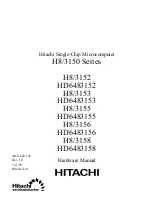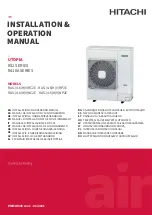
TC4411 CPU3 for TCIV Pius
will persist even if the caller hangs up. If the remote-can-
call switch for calling in from another part of the room.
celing feature is enabled, the call-in can be canceled by Through the
“D”
Attributes,
the phone and the switch can
picking up the phone again and hanging up without make different types of call-ins, which could go to differ-
dialing anything. The phone can also have an associated ent LCD drivers.
Monitor, Serial-Port, and Memory Functions
Alternate EEPROM Memory
Like the standard CPU2, the CPU3 has a second block
of EEPROM memory for storing either a back-up copy of
the user programming or an alternate set of programming
that could be used at night, during weekends, etc. What
is new on the
CPU3
is, first, that this block can be accessed
by grounding MI0 terminal “A70.” Grounding "A70”
causes the system to run off this alternate programming.
to change this programming, use the #99 and #98 func-
tions. Third, the TCPU3 diagnostic program can program
this block without applying the “A70” jumper, setting the
program jumper to “enable,” or turning off the Monitor
Lock (see “Preventing Programming Changes,” below).
Note: Starting with Version 204 system software, after
the #98 or #99 function has started, the displaywill show
a “1” or a “2,” indicating which EEPROM block you are
working with.
TCPU3
Diagnostic Program
The new TCPU3 Diagnostic Program begins by check-
ing whether it is connected to a CPU2 or a CPU3. If it
detects a CPU2, it lets you select the TCPU2 (formerly
called the T6) program; if it detects a CPU3, it automati-
cally loads its new diagnostic mode.
This new mode is very different from TCPU2, which
works with the S-bit
CPU.
Some differences are:
a. The
TCPU3 uses a special protocol to set the CPU3
baud rate, which can be as high as 9600.
Note: Adding “128” to Location Code 64268 will
prevent the TCPU3 from changing the baud rate on
a CPU3; this is explained further on, under “Baud-
Rate Selector.” (This setting is irrelevant to the
CPU2, because its baud rate is set by a hardware
jumper.)
b.
It uses binary packets instead of ASCII hex files
when making memory-block transfers. This in-
creases speed and reliability.
c. It can override both the hardware EEPROM lock-
out jumper the software “Monitor Lock,” even
from a remote location.
d. It addresses separate EEPROM blocks by software
and so does not need a ground jumper on “A70,”
as explained in the preceding subsection.
e. The
I/O
diagnostic contains more information and
does not require halting.
f. It can use application programs to review or mod-
ify the EEPROM set-up data.
Important: T o
copy programming from a
CPU2
to a
CPU3
follow this sequence:
1)
Start the
“TCPU2.Exe”
(new name) or “T6” (old
name) program.
2) Save the CPU2’s programming to the computer’s
disk.
3) Install the CPU3.
4) Restart the TCPU3 Diagnostic Program.
5) Copy the programming from the disk to the CPU3.
Alternatively, if you are unsure which CPU you are
working with (e.g., because you are working via a modem
at a remote location), you can start the TCPU3 program.
If it detects
a CPU2,
it will prompt you to load the TCPU2
program. If you do this, you
must
restart the TCPU3
program before workingwith the CPU3. The new diagnos-
tic program checks which CPU it is working with at the
beginning. If you switch to the CPU3 after the program
has started, it will continue operating in the TCPU2 diag-
nostic mode, which will not work properly with a CPU3.
Preventing Programming Changes
There are two basic methods of preventing unautho-
rized changes to the user programming: the hardware
programming jumper on the
CPU
board, and the software
“Monitor Lock” function (Location Code 64 100). When
either lock is engaged, the “#” programming functions
can still read and display existing programming entries.
When used by itself, the hardware lock allows attempted
programming changes made by an Administrative phone
to appear on the display, but the system will not save these
changes. The software “Monitor Lock” does not even
allow attempted changes to appear on the display.
Diagnostic Override
Note that either of these locks can be bypassed via the
serial port, which would be used by a computer with the
TCPU3 Diagnostic Program. This port ignores the software
Monitor Lock but requires a command to override the
hardware jumper: simply go to the “terminal mode” and
type
l0lE=l0
(note that the last character is the letter
“0,“ meaning ”output”). To restore the functioning of the
hardware jumper after using this command, either type
lOlC=lO or reset the system.
Programming-Disable Jumper
This prevents all changes to the programming even if
the software “Monitor Lock” is “open.” This three-pin
header is on the front middle part of the CPU board. Place
the sleeve jumper in the “N” position to enable the pro-
gramming function or in the “D” position to disable the
programming function. As expained in the preceding
paragraph, this jumper can be overridden by a computer
connected to the board’s serial port.
Monitor Lock (Location
64100)
When the hardware programming jumper is in the
“enable” position, this software function c a n prevent
































